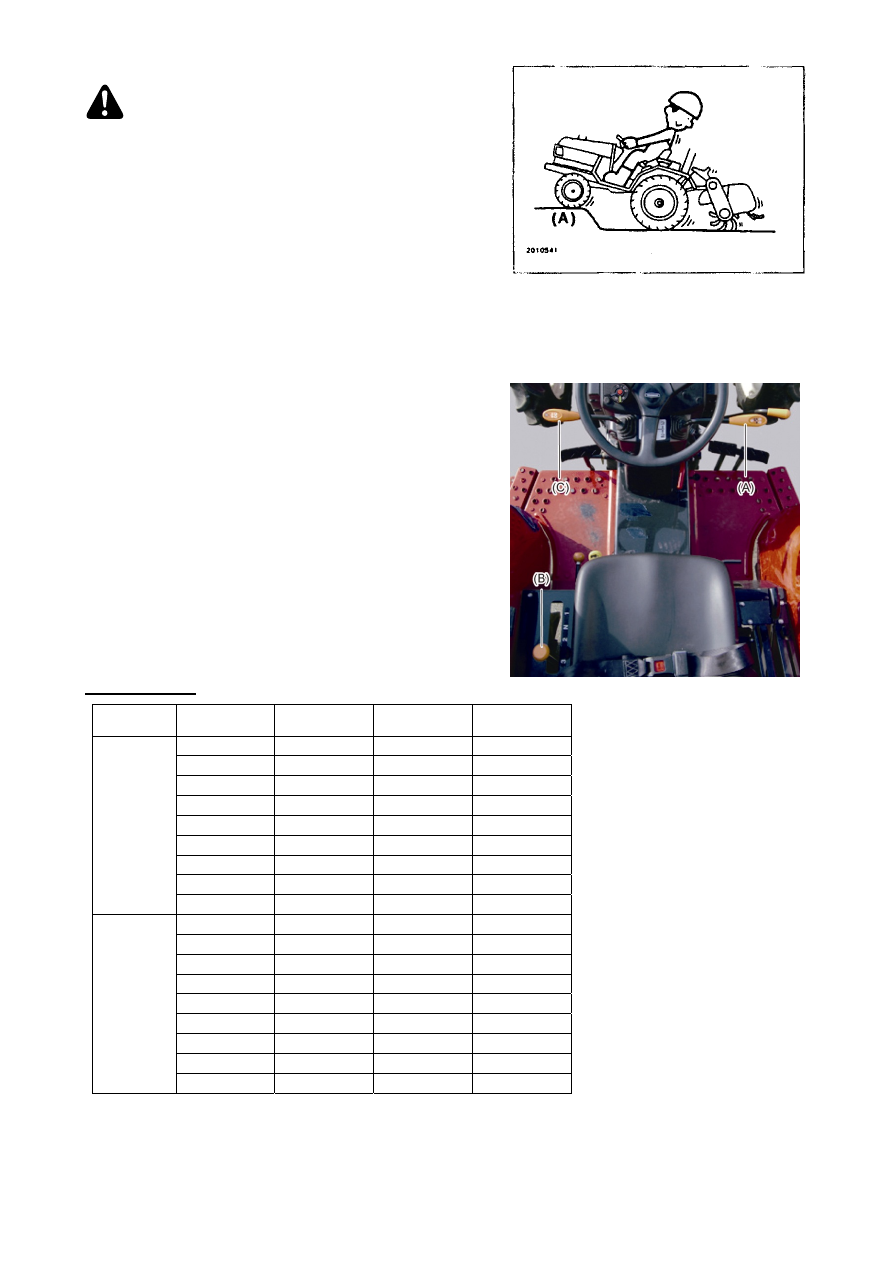Yanmar diesel tractor EF494T. OPERATOR'S MANUAL - part 11

EF494T OM
40
10. Driving
in
and out of Fields
WARNING
Always connect the left and right brake pedals with
the connector. Otherwise, one-sided braking can
cause a roll over.
When approaching the field or when crossing a
ditch, use a gangplank of sufficient strength to enter
the field. Lower any implement to reduce the center
of gravity.
Climb a slope backwards, in reverse. Drive down a
slope forward, in low gear.
Before starting to climb a hill, lower any implement.
After the rear wheels are on the ridge (A), you can
lift the implement.
(A) Ridge
11. Setting
an
adequate
speed
9 forward speeds and 9 reverse speeds are available by
the combination of main, range and reverse shift levers.
Use an adequate speed for works referring to the table
below.
(A) Main shift lever
(B) Range shift lever
(C) Reverse shift lever
Driving Speed
F/R
Shift
position
Main shift
Range shift
km/h
Forward
1 1 1
1.63
2 2 1
2.26
3 3 1
3.30
4 1 2
4.00
5 2 2
5.57
6 3 2
8.14
7 1 3
14.18
8 2 3
19.72
9 3 3
28.80
Reverse
1 1 1
1.68
2 2 1
2.33
3 3 1
3.41
4 1 2
4.13
5 2 2
5.74
6 3 2
8.39
7 1 3
14.62
8 2 3
20.33
9 3 3
29.70